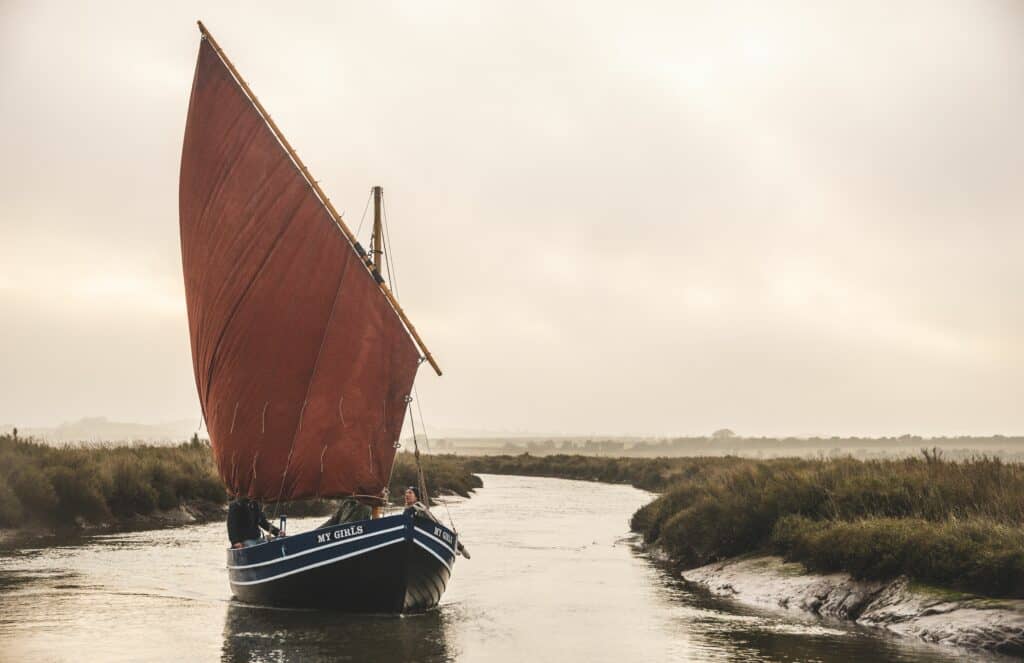
Traditional Smuggling
Don’t be a tourist. Be an outlaw! Long ago complicit landowners turned a blind eye to 18th century smugglers moving illicit goods into the county. First class local knowledge was essential to navigate the treacherous network of tidal creeks and shift lace, gin, baccy and brandy-wine past the excise men. And that’s what you’ll learn on this full day or 24 hour immersive sailing adventure.
The Norfolk coast is laced with secret channels, winding inland from the open sea, and somewhere out there is a stash of contraband. You just have to find it! Discover the ways and means of Norfolk’s infamous free traders, explore traditional sailing, navigation, the art of smuggling, agent rendezvous, coastal field craft, escape and evasion techniques. On an environmentally friendly restored whelk boat or similar craft, slide past sandbanks and creep through creeks following paths of dark water.
You’ll take part in a clandestine operation, required to pick up the goods and make your drop without getting caught. No experience required…unless there’s something you’re not telling us!
Smugglers need to be well fed, so for breakfast, lunch, and supper you’ll tuck into Norfolk’s best food, maybe some locally sourced eggs and bacon, artisan sourdough, Norfolk cheeses, pies, soup, cakes and more.
And is there actual contraband? All we can say is ask no questions and you’ll be told no lies. Those with the right attitude should drop a discreet line to the Coastal Exploration Company for further details. Shhh!
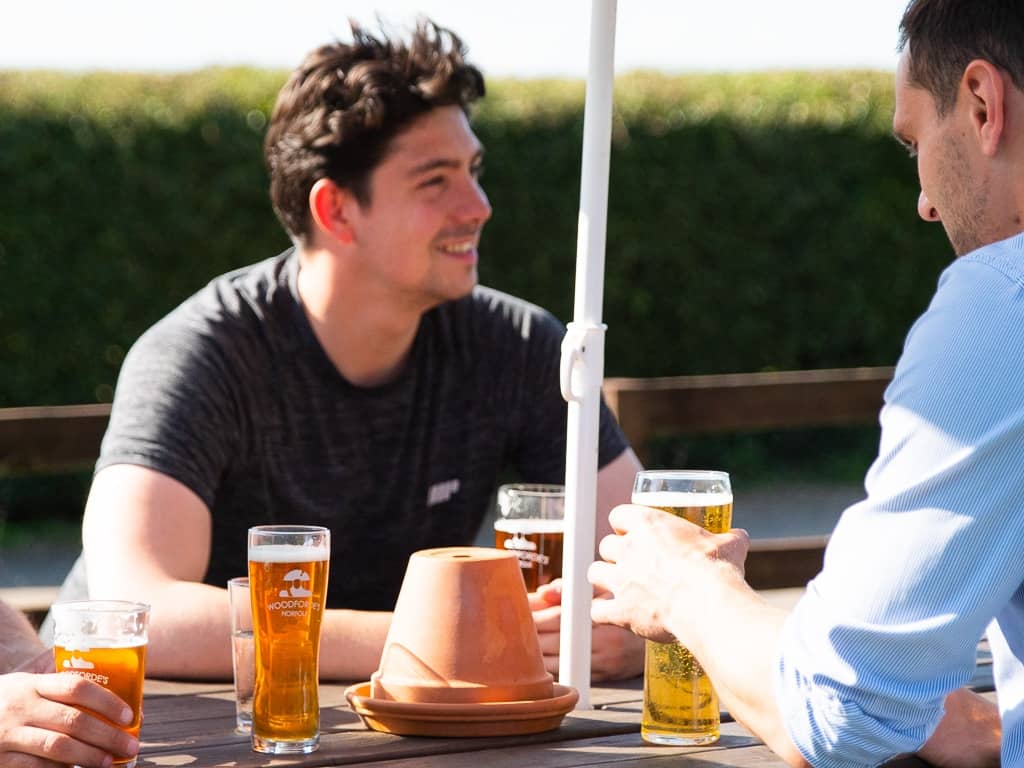
Drink and Dine at Admiral Lord Nelson’s Local
If you admire the Admiral, walk in Lord Nelson’s footsteps and have a drink in his local. The Lord Nelson is a beautiful, traditional pub steeped in history, standing majestically near the North Norfolk coast on the edge of Burnham Thorpe where Horatio Nelson was born. And this was once The Plough, a taproom where young Nelson drank and dreamed of a career in the British navy. Renamed after Nelson’s victory in the Battle of the Nile, it’s an incredibly cosy place, with original snug bars and wood burning stoves, the quintessential winter pub. The look of Nelson’s time has been preserved and refined, with wooden settles (including one on which the Admiral sat) and the same stone floors he walked on sensitively restored. There’s plenty of Nelson memorabilia on the walls too. With local ales from Woodforde’s Brewery tapped from the cask and a fabulous menu celebrating the rich variety of Norfolk’s local seasonal produce, it’s a wonderful place to stop for lunch when you’re out exploring the beautiful Burnhams.
History buffs might enjoy an afternoon on the trail of this area’s most famous son. Visit All Saints Church, opposite The Lord Nelson pub where Nelson’s parents and brother and sister are buried and the altar, rood screen and lectern are made with timbers donated by the Admiralty from Nelson’s flagship, the HMS Victory. There’s plenty more to discover too, before a night in the pub, snug by the fire instead of somewhere out there on the wintry sea.
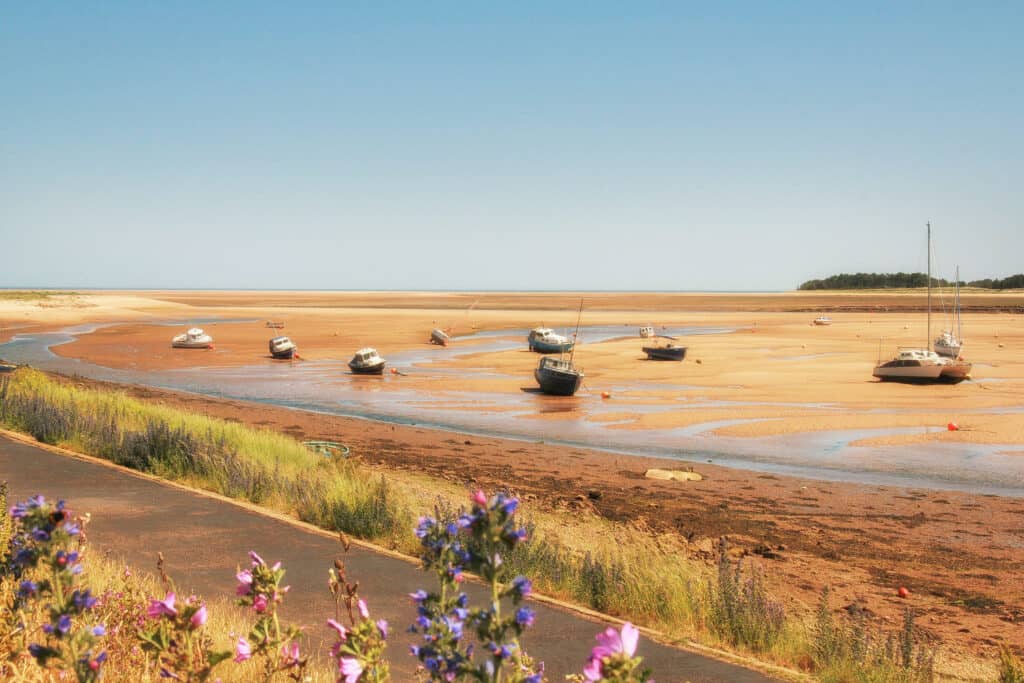
The Cavalry Charge of Wells
Wells Next The Sea, a friendly town, where law abiding folk go about their private business. Take a walk out to the golden sands. Peaceful, isn’t it? Let’s wind back a couple of hundred years.
It’s 1817. A big day out. There’s a town horse race on the sands. Everyone will be distracted. Especially the ‘preventative men’, Customs and Excise officers, perpetually trying to outwit local smuggler gangs. But one man’s criminal is another’s hero, bucking the system to avoid paying taxes to the crown. Swaggering ‘Free traders’ were quite open about their illegal activities. After all, a mix of violent threat and local support gave them licence to behave as they liked. Certainly, the vast majority of those who lived in and around the tiny villages of Blakeney, Stiffkey and Wells benefited from this tax-free trade. Indeed, it was often funded by wealthy local venturers.
So John Dunn, leader of the smugglers, planned to land his contraband during the horse race, an audacious crime committed in plain sight. But the prevention officers weren’t that stupid! They tried to seize the barrels and were immediately attacked by the lawless gang. A yeomanry Major happened to be in the crowd and ordered his men to pile in. The cavalry charged full pelt into the fray, clouting locals across the head in a pitched battle. It was mayhem!
Oddly, the gang still escaped with most of the barrels. And, we reckon, a jolly good evening was had by all.

Creake Abbey Food Hall
If you’re a foodie, don’t miss Creake Abbey Food Hall! It sits amid beautiful water meadows a few miles south of Burnham Market and the glorious north Norfolk coast. A stone’s throw from the magnificent ruins of an Augustinian Abbey dating from 1206 you’ll find an airy café, food hall and beautifully curated collection of independent shops and services including a florist, hairdresser, picture-framer and boutique of pristine preloved designer gear.
Forget sterile supermarkets! Creake Abbey’s friendly Food Hall is a treasure trove of delicious local produce embracing the seasonal richness of Norfolk and beyond.
This glorious food experience supports local farmers and wonderful local food and drink producers, offering everything from chewy sourdough bread to zingy salads and super fresh deli treats including best selling cheeses Mrs Temple’s Binham Blue and Ferndale Farm’s Norfolk Dapple. Add a box of Creake Abbey’s famous sausage rolls along with gorgeous fruit and vegetable harvests, soft drinks, wine and beer and there’s everything you need for a fabulous feast. Can’t be bothered to cook? Chefs at onsite Creak Abbey Café rustle up delectable oven-ready meals including classics like scrumptious fish pie, authentic lasagne and fabulous crumbles. Third helping? Don’t mind if I do!
As well as celebrating Norfolk produce, Creake Abbey Food Hall expertly sources exciting new food and drink brands perfect for stylish stocking fillers and gourmet gifting. Hampers for all seasons are a speciality or let the crew sort out your own bespoke Norfolk picnic! So good!
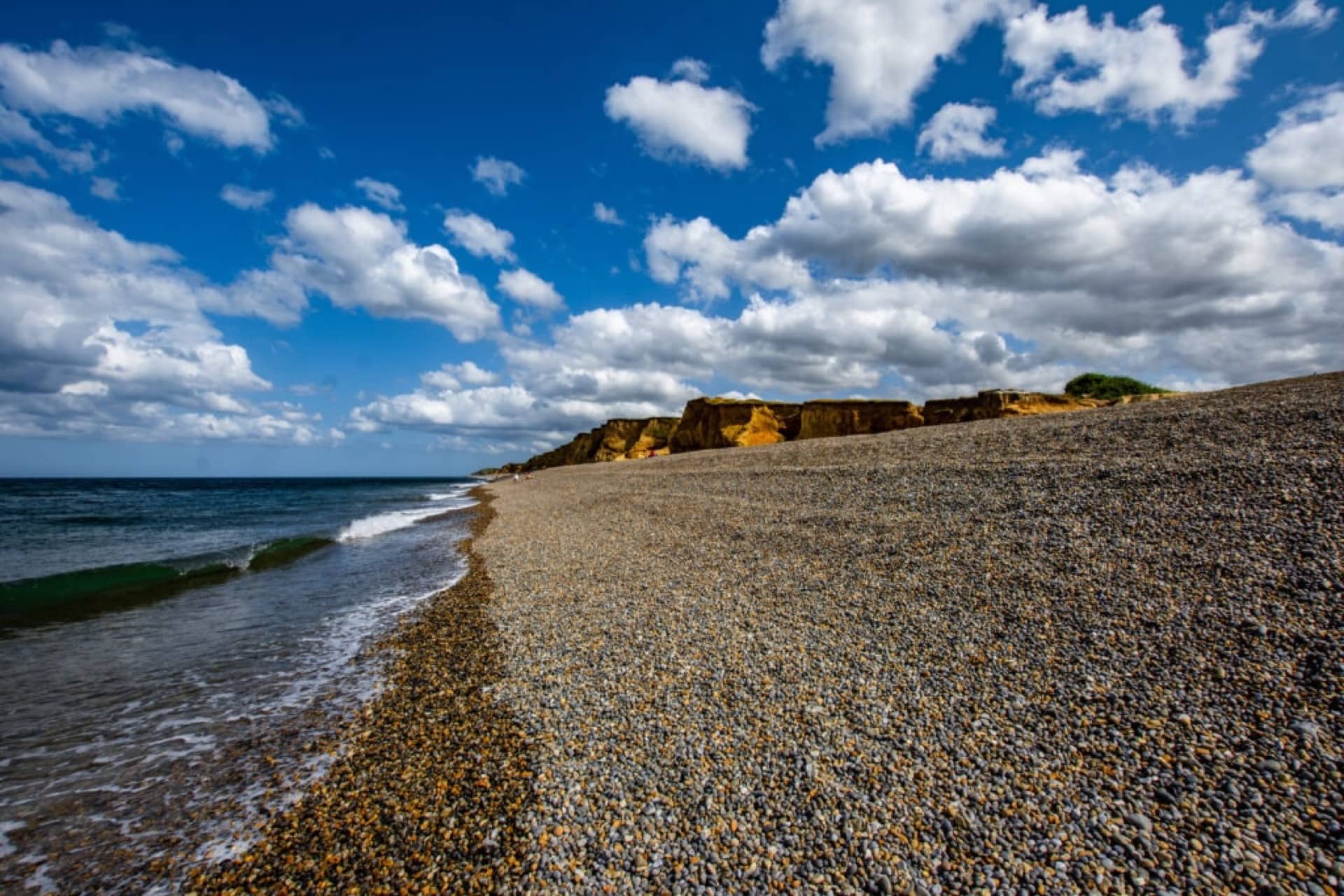
People of the Pebbles
Tales of smugglers run through Norfolk like ribbons of moonlight. And some are stranger than others…
Seafaring free traders worked with onshore accomplices unloading illicit cargo, spiriting it inland on waiting carts. The shingle sweep of Weybourne beach had scarce hiding places and a keen customs officer watching from the sandy cliffs had a good chance of spotting unusual nocturnal activity and quickly raising the alarm.
So the cunning landing parties came up with an ingenious trick. Stealthily, they buried themselves in pebbles up to the neck, stock still in the shadows of the night. When the coast was clear, a whistled signal told the men to rise up from their shingle hollows like the returning dead and empty the boats. It’s said a local landowner, Mr William J. Bolding, turned a blind eye to the comings and goings in return for a hefty share of the contraband.
But those days are long gone. Or are they? For it’s said on nights when the moon is full, a low whistle is heard in the village of Weybourne and it belongs to a dead man walking. Smuggler John Smythe was late back to the beach after visiting his lover, the inn’s landlady. Believing him caught, his companions rowed away. When John whistled for them, the watching revenue officers sprung out. Cornered, John waded into the sea where he drowned, still whistling in vain hope of rescue.
Which ghosts might you meet on the winding paths of Weybourne?
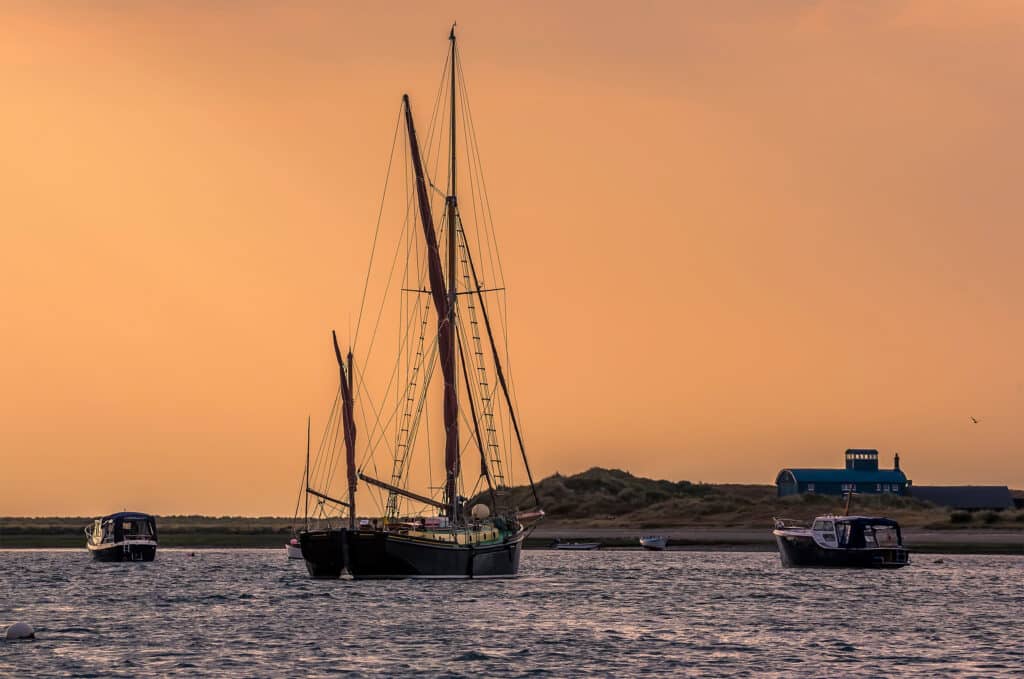
Norfolk’s Little Ports
Norfolk is awash with picturesque coastal towns and villages, but the wayward salt marsh has transformed the landscape over the centuries, and with it the livelihoods of places like Cley, Blakeney, Wiveton, and the Burnhams. Hard to imagine as you wander along the seawall listening to the wild gulls call, but these were once important trading ports. Former Stiffkey resident, Tarka the Otter author Henry Williamson wrote:
‘Once the coast here was lower, and the sea came up the channels with every tide, bearing wooden ships burthened with cargoes which were unloaded on the quays and taken in inland wagons. Many sailed away with grain, to other ports in England, who wanted the North Norfolk barley for beer. Gold was the medium by which payments were made, but not the paramount purpose of the exchange. The general principle was that exchange of goods in the community. Northumbria wanted barley to make beer to feed the coal miners, and East Anglia wanted coal. So barques with coal left Newcastle and drew into Cley and Blakeney and Overy and Burnham and returned with barley and wheat. The farmer sent his loaded wagon, painted with bright colours, drawn by four horses, from his black barn door to the quayside granary of his merchant, trusting him to pay the right price for the grain, and often as not the wagon came back with a load of coal and other goods.’
Henry Williamson,’Green Fields and Pavements’ by permission of The Henry Williamson Literary Estate ©
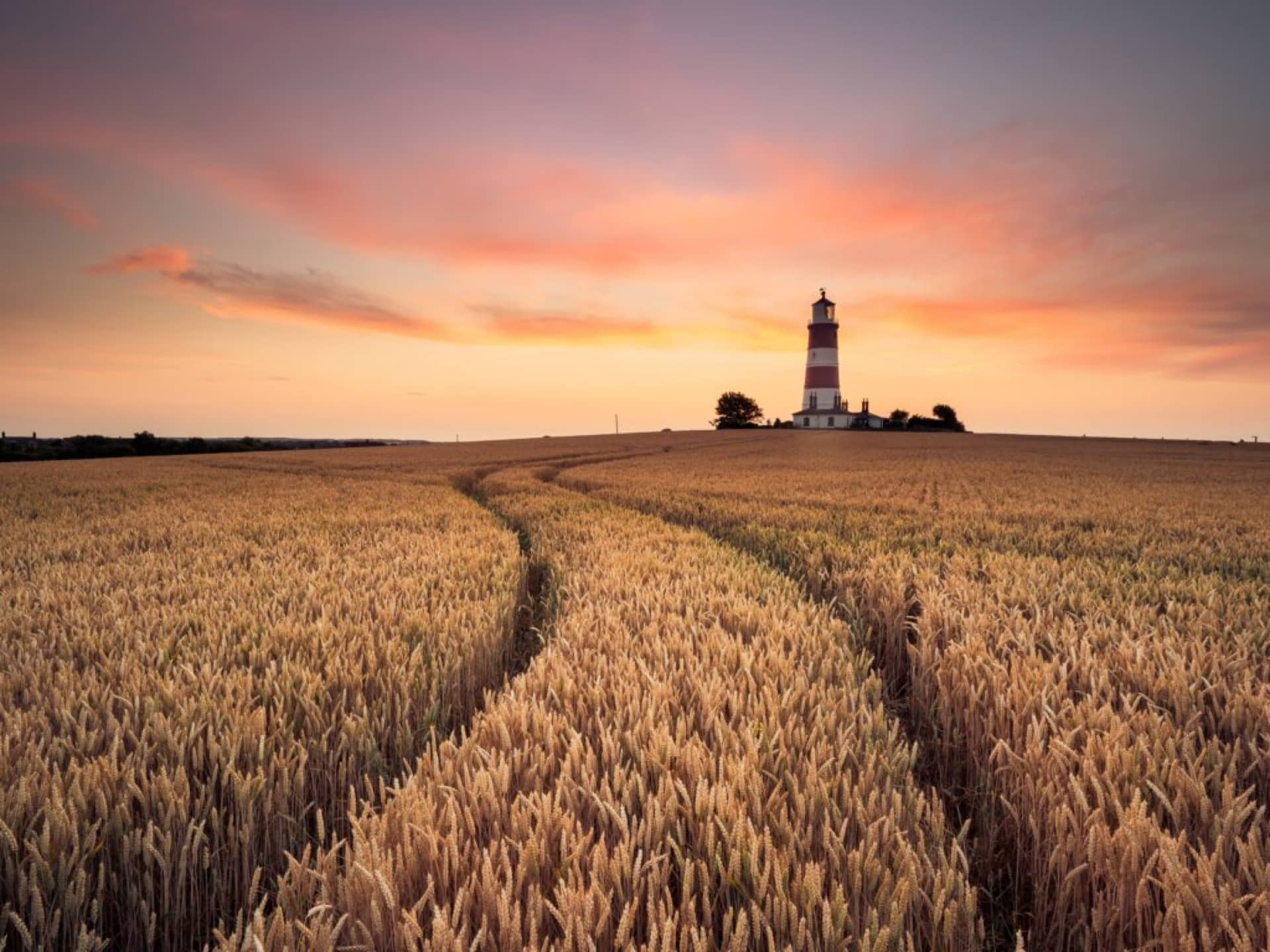
The Legless Ghost of Happisburgh
Happisburgh is a place of shifting boundaries, land and sea, time and space, life and death. Even the name changes, depending on where you’re from. Those in the know say ‘Haze-burr’, anything else just sounds strange. And talking of strange things, here’s a gruesome ghost story for winter nights.
There were once some farmers heading home for supper and a flagon of ale. Near Cart Gap they saw a figure lurching towards the village, clutching a filthy sack. He seemed to be a poor hunch-backed sailor but something was very wrong. Peering through the gathering dusk the farmers were struck with sickening horror. That was no hump, but a nearly severed head, hanging by a single ribbon of flesh, thudding against the spectre’s spine as it walked. Yet how did it walk? For the grisly creature had no legs!
Terrified, the farmers hotfooted it to the inn. (We’d wager the phantom wasn’t the only one completely legless that night!) After more sightings, the gruesome ghost was followed to the grassy triangle where Whimpwell Street meets Whimpwell Green and Coronation Road. There it vanished into a well. A brave young man lowered himself down, groping in the gloom. There was the sack! And inside were sailor’s boots…with sailor’s legs still inside! The well was drained. And there was another sack, containing a torso in sailor’s uniform, its hideous skull dangling by a strip of rotting flesh.
Smugglers’ tale or true? We dare you to investigate…
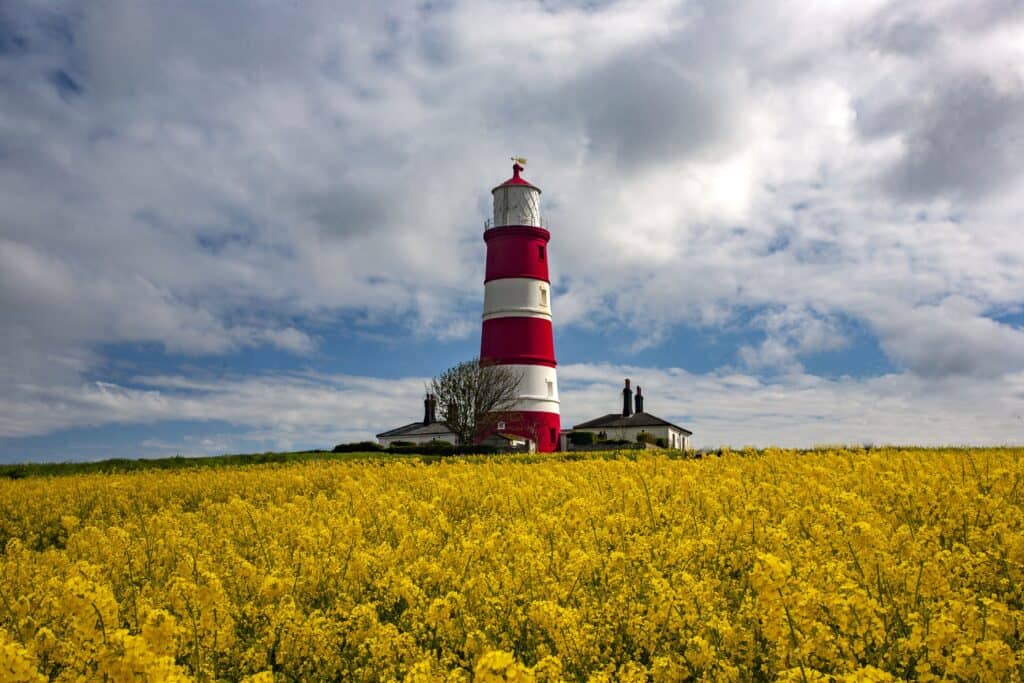
Happisburgh Lighthouse
On the east coast of Norfolk stands an enigmatic lighthouse. Facing the sunrise, it sits proudly on Happisburgh’s soft sandy cliffs where each morning the first rays of light catch the colourful facade, bathing its red and white stripes in the orange glow of a new day. This photogenic landmark was built in the wake of a terrible tragedy. In 1789 a terrible storm blew up. 70 sailing ships were wrecked in the crashing waters and 600 men lost their lives. The subsequent enquiry drew attention to the lack of warning lights between Cromer and Winterton so in 1791 two lighthouses were constructed. The ‘Low Light’ is now demolished but the ‘High Light’ is the distinctive tower that survives today. Once the ‘Low Light’ had gone, during daylight it was necessary to distinguish the Happisburgh lighthouse from the tower at Winterton and so three spectacular broad red bands were painted on the Happisburgh tower, just as you see today.
In 1987 Happisburgh Lighthouse was one of five lighthouses declared redundant with decommissioning scheduled for summer 1988. But local people were not going to allow their beloved lighthouse to be torn down! They mobilised and in 1990 a Private Bill was granted Royal making Happisburgh Britain’s only independently operated working lighthouse. It’s also the oldest working lighthouse in East Anglia, looked after by the Happisburgh Lighthouse Trust. It’s fascinating to look inside so if you can’t make one of the set open days, contact them to arrange a private visit.
Build your own itinerary
If you fancy creating your own itinerary for a day trip to Norfolk or a longer visit, it couldn’t be simpler. Just go to Search Activities and select from our wide range of free and paid-for experiences, saving any that capture your imagination with the click of a button.
Once you’ve finished, you’ll find all the information stored in My Favourite, where you can drag and drop activities to create your own day-by-day itinerary! You can download this to a calendar and even share it with friends.